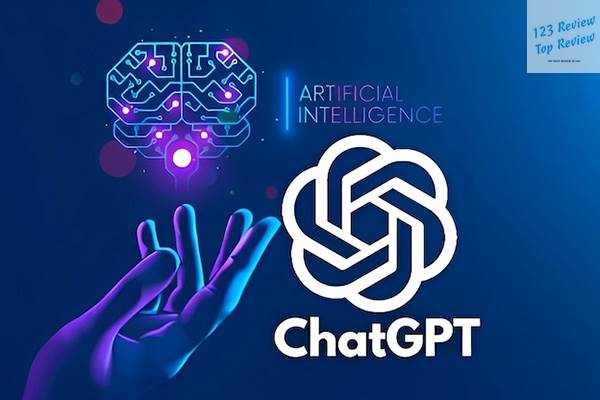As artificial intelligence continues to advance, the integration of AI models into various industries has become increasingly commonplace. Among these, OpenAI’s ChatGPT stands out as a pioneering force in natural language processing (NLP) and text generation. Designed to understand and generate human-like text, ChatGPT has quickly gained traction in diverse fields, from academic research to customer service.

In this article, 123 Review delves into the intricacies of ChatGPT, examining its capabilities, strengths, limitations, and ethical considerations, while also exploring its potential future developments.
The Capabilities of ChatGPT
Natural Language Processing and Generation
At the heart of ChatGPT is its robust natural language processing engine, which enables it to comprehend and generate text in a way that closely mimics human communication. This capability is powered by the GPT (Generative Pretrained Transformer) architecture, which leverages vast datasets and complex algorithms to understand and respond to a wide range of queries.
Understanding Context
One of the most impressive aspects of ChatGPT is its ability to understand context. When users input text, the model processes the information by analyzing not just the words themselves but also the surrounding context. This allows ChatGPT to generate responses that are relevant, coherent, and contextually appropriate. Whether the input is a simple question, a complex inquiry, or a casual conversation, ChatGPT can adapt its responses accordingly.
For example, when asked about a specific historical event, ChatGPT can provide an accurate summary, drawing on its extensive training data. If the conversation shifts to a different topic, such as a recommendation for a book or movie, the model seamlessly transitions, offering suggestions that align with the user’s interests.
Text Generation and Creativity
Beyond understanding, ChatGPT excels in generating text. Its ability to produce creative and articulate content makes it a valuable tool for writers, marketers, educators, and other professionals. Users can rely on ChatGPT to draft emails, create reports, compose essays, and even write poetry or fiction. The model’s flexibility in tone and style allows it to tailor its output to suit various purposes, whether it’s formal, casual, technical, or creative.
For instance, in a marketing context, ChatGPT can generate persuasive product descriptions, engaging social media posts, or compelling ad copy. In educational settings, it can help create study guides, explain complex concepts, or provide feedback on written assignments. Its creative potential extends to more artistic endeavors, where it can assist in brainstorming ideas, crafting narratives, or composing music lyrics.
Versatility Across Applications
The versatility of ChatGPT is one of its most significant strengths. Its ability to handle a wide array of tasks makes it a valuable asset in numerous industries. Here are some examples of how ChatGPT is being utilized:
Academic Research and Writing
In academic circles, ChatGPT has become a powerful tool for researchers and students alike. It assists in generating literature reviews, summarizing research findings, and even drafting papers. Researchers can use the model to explore different angles of a topic, generate hypotheses, and refine their arguments. For students, ChatGPT can provide explanations, clarify concepts, and offer suggestions for improving their writing.
Moreover, ChatGPT’s ability to process large amounts of text quickly allows it to identify key themes and trends in scholarly articles, making it easier for researchers to stay up-to-date with the latest developments in their field. However, it is essential to note that while ChatGPT can aid in research, it should not be seen as a substitute for critical thinking or in-depth analysis.
Content Creation and Marketing
Content creators and marketers have also embraced ChatGPT for its ability to produce high-quality content efficiently. From generating blog posts and articles to crafting social media updates and newsletters, ChatGPT can handle a wide range of content-related tasks. Its ability to maintain a consistent tone and style across different formats ensures that the content aligns with the brand’s voice.
For example, a content marketer can use ChatGPT to draft multiple versions of a blog post, each targeting a different audience segment. The model can also assist in optimizing content for search engines (SEO) by incorporating relevant keywords and phrases, thereby increasing the content’s visibility and reach.
Customer Support and Interaction
In the realm of customer support, ChatGPT serves as an intelligent virtual assistant, capable of handling a variety of customer inquiries. It can answer frequently asked questions, troubleshoot common issues, and provide personalized recommendations. By automating routine tasks, ChatGPT frees up human agents to focus on more complex or sensitive customer interactions.
For instance, an e-commerce company might use ChatGPT to handle order tracking inquiries, provide product information, or assist with returns and exchanges. The model’s ability to understand and respond to customer queries in real-time enhances the overall customer experience, leading to higher satisfaction and loyalty.
Coding and Programming Assistance
For developers and programmers, ChatGPT offers valuable assistance in coding and software development. The model can generate code snippets, debug errors, and explain complex programming concepts. Whether a developer is working on a small script or a large-scale project, ChatGPT can help streamline the coding process, reducing the time and effort required to complete tasks.
For example, a developer might use ChatGPT to quickly generate code for a specific function or to troubleshoot an error in their codebase. The model’s ability to understand different programming languages and frameworks makes it a versatile tool for developers at all skill levels.
Multilingual Support
Another notable feature of ChatGPT is its ability to support multiple languages. This capability opens up opportunities for global communication and collaboration, as users can interact with the model in their native language. Whether it’s drafting a document in Spanish, translating text from French to English, or providing customer support in Mandarin, ChatGPT’s multilingual proficiency makes it a valuable resource for international organizations and individuals.
Moreover, the model’s ability to switch between languages within the same conversation allows for seamless communication across linguistic barriers. This feature is particularly useful in multicultural settings, where effective communication is essential for collaboration and success.
Accessibility and User-Friendly Design
ChatGPT’s accessibility and user-friendly design have contributed significantly to its widespread adoption. The model is available through various platforms, including web applications, APIs, and integrations with popular software tools. This flexibility allows users to access ChatGPT from different devices and environments, making it a convenient tool for both professional and personal use.
The model’s intuitive interface and straightforward setup process ensure that even users with limited technical expertise can start using ChatGPT with ease. Its ability to handle natural language input means that users don’t need to learn specialized commands or programming languages to interact with the model. This accessibility has democratized the use of AI, making it available to a broader audience.
Efficiency and Time-Saving Capabilities
One of the key advantages of ChatGPT is its ability to save time and improve efficiency across various tasks. By automating routine or repetitive tasks, the model allows users to focus on higher-level activities that require creativity, strategy, and critical thinking. This efficiency is particularly valuable in fast-paced environments, where time is a critical resource.
For example, a busy executive might use ChatGPT to draft emails, schedule meetings, and prepare reports, freeing up time for strategic decision-making. In a customer support setting, the model can handle a high volume of inquiries simultaneously, reducing response times and improving overall service efficiency.
Limitations of ChatGPT
While ChatGPT offers numerous benefits, it is not without its limitations. Understanding these limitations is crucial for users who wish to leverage the model effectively and responsibly.
Handling Complex and Nuanced Contexts
One of the primary challenges with ChatGPT is its ability to handle complex and nuanced contexts. While the model excels in straightforward tasks and common scenarios, it may struggle when faced with highly specialized or intricate queries. This limitation is due to the model’s reliance on patterns learned from its training data, which may not always capture the full depth and complexity of certain topics.
For example, in legal or medical contexts, where precision and expertise are paramount, ChatGPT’s responses may lack the necessary accuracy or depth. Users should exercise caution when using the model for tasks that require specialized knowledge, and it is advisable to consult with experts in such cases.
Inconsistencies and Errors
Although ChatGPT is designed to generate accurate and reliable content, it is not infallible. The model’s performance can vary depending on the input and the complexity of the task. In some cases, ChatGPT may produce inconsistent or erroneous responses, particularly when dealing with ambiguous or unclear queries.
For instance, if a user inputs a poorly structured or vague question, the model may generate a response that is off-target or lacks coherence. Additionally, ChatGPT may occasionally provide information that is outdated or incorrect, particularly if the topic is recent or rapidly evolving. Users should be aware of these potential pitfalls and verify critical information, especially in contexts where accuracy is crucial.
Ethical Concerns and Biases
The use of AI models like ChatGPT raises important ethical considerations, particularly concerning biases and fairness. Since the model is trained on large datasets that reflect human language and behavior, it may inadvertently reproduce biases present in the data. These biases can manifest in various ways, such as gender stereotypes, racial biases, or cultural assumptions.
Mitigating Bias
OpenAI has made efforts to identify and mitigate biases in ChatGPT’s responses. This includes refining the training data, implementing fairness checks, and incorporating feedback from diverse user groups. However, completely eliminating bias is a complex and ongoing challenge. Users should be mindful of the potential for biased outputs and approach the model’s responses critically.
Data Privacy and Security
Data privacy is another critical ethical concern associated with ChatGPT. Since the model processes user input to generate responses, there is a risk of sensitive information being inadvertently shared or stored. Users must be cautious when interacting with the model, particularly when dealing with personal or confidential data.
OpenAI has implemented measures to protect user privacy, such as anonymizing data and adhering to strict data retention policies. However, users should remain vigilant and avoid sharing sensitive information with the model unless absolutely necessary.
Over-Reliance on AI
The convenience and efficiency offered by ChatGPT can lead to an over-reliance on AI, where users may become dependent on the model for tasks that would typically require human judgment and expertise. While ChatGPT can assist with a wide range of activities, it is essential to recognize that it is a tool, not a replacement for human intelligence.
For example, in creative fields like writing or design, relying too heavily on ChatGPT may stifle originality and innovation. Similarly, in decision-making processes, the model’s suggestions should be considered as one input among many, rather than the final word. Users should strike a balance between leveraging AI capabilities and exercising their judgment and creativity.
Ethical Considerations in the Use of ChatGPT
The ethical implications of using ChatGPT extend beyond biases and privacy concerns. As AI technology becomes more integrated into society, there are broader ethical questions that need to be addressed.
The Impact on Employment
The widespread adoption of AI models like ChatGPT has raised concerns about the potential impact on employment. As automation becomes more prevalent, there is a fear that certain jobs, particularly those involving routine or repetitive tasks, may be at risk. For example, roles in customer support, content creation, and data entry could be increasingly automated, leading to job displacement.
However, it is also important to recognize that AI has the potential to create new opportunities and enhance existing roles. By automating mundane tasks, ChatGPT allows workers to focus on higher-value activities that require creativity, critical thinking, and interpersonal skills. The key lies in finding ways to integrate AI into the workforce in a way that complements human capabilities rather than replacing them.
The Role of AI in Decision-Making
As AI models become more sophisticated, there is a growing interest in using them for decision-making processes. While ChatGPT can provide valuable insights and recommendations, it is essential to consider the ethical implications of delegating decision-making authority to AI.
For instance, in fields like healthcare, law, or finance, decisions can have significant consequences for individuals and society. Relying solely on AI for such decisions raises questions about accountability, transparency, and fairness. It is crucial to ensure that human oversight and ethical considerations are integrated into any decision-making process that involves AI.
The Future of AI Governance
The rapid development of AI technology has outpaced the establishment of comprehensive regulatory frameworks. As AI models like ChatGPT become more widespread, there is an urgent need for governance structures that address the ethical, legal, and societal implications of AI.
Policymakers, industry leaders, and researchers must work together to develop guidelines and regulations that ensure the responsible use of AI. This includes addressing issues like data privacy, bias mitigation, accountability, and the potential impact on society. By establishing clear and ethical standards, we can harness the benefits of AI while minimizing the risks.
The Future of ChatGPT and AI Development
Looking ahead, the future of ChatGPT and AI development is filled with possibilities. As AI technology continues to evolve, we can expect further advancements in natural language processing, machine learning, and human-computer interaction.
Improved Accuracy and Understanding
One area of focus for future development is improving the accuracy and understanding of AI models. This includes refining the training data, enhancing the model’s ability to handle complex contexts, and reducing the occurrence of errors. By addressing these challenges, AI models like ChatGPT will become even more reliable and effective tools for users.
Enhanced Creativity and Personalization
Another exciting avenue for future development is the enhancement of AI’s creative capabilities. As AI models become more sophisticated, they will be able to generate increasingly complex and creative content, from art and music to literature and design. Additionally, advances in personalization will allow AI models to tailor their responses more precisely to individual users, providing a more customized and engaging experience.
Integration with Emerging Technologies
The future of AI will likely involve greater integration with other emerging technologies, such as augmented reality (AR), virtual reality (VR), and the Internet of Things (IoT). These integrations will enable new and innovative applications of AI, from immersive virtual experiences to intelligent environments that adapt to user needs.
For example, ChatGPT could be integrated into AR or VR platforms to provide real-time assistance, guidance, or entertainment in immersive environments. In the context of IoT, AI models could interact with smart devices to create seamless and intuitive user experiences.
Ethical AI Development
As AI technology continues to advance, ethical considerations will remain at the forefront of development. Researchers and developers will need to prioritize fairness, transparency, and accountability in AI design. This includes ongoing efforts to identify and mitigate biases, protect user privacy, and ensure that AI models are used responsibly.
Moreover, as AI becomes more integrated into society, there will be a growing need for public education and awareness about the ethical implications of AI. By fostering a culture of ethical AI development, we can ensure that AI technology is used in ways that benefit society as a whole.
Conclusion
ChatGPT represents a significant milestone in the development of artificial intelligence, offering powerful capabilities in natural language processing, text generation, and more. Its versatility and efficiency have made it a valuable tool across various industries, from academic research and content creation to customer support and programming assistance.
However, it is essential to recognize the limitations and ethical considerations associated with AI models like ChatGPT. As we continue to explore the potential of AI, it is crucial to approach its use with caution, ensuring that we balance the benefits with the risks.
The future of AI is filled with exciting possibilities, and ChatGPT is just one example of the transformative impact that AI can have on our world. By continuing to innovate and prioritize ethical considerations, we can harness the power of AI to create a better and more equitable future for all.





